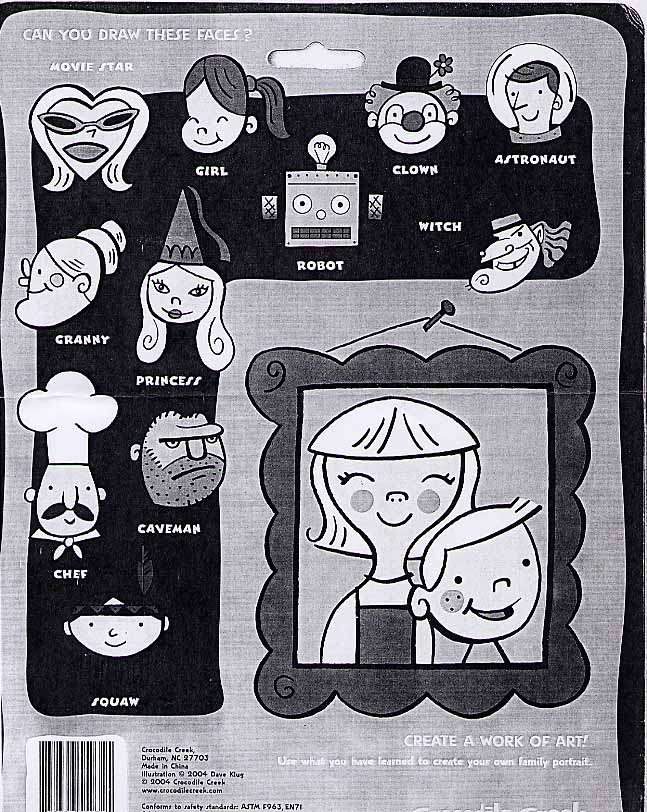 Another Stereotype of the Month entry:
Another Stereotype of the Month entry:
 Another Stereotype of the Month entry:
Another Stereotype of the Month entry:
A correspondent this illustration from the back of a Crocodile Creek sketchpad. Note the inclusion of a "squaw."
Referring to an Indian as a squaw is the main problem here. See Squaw: The S-Word for details.
In addition, what's with the headband and single feather. I can't recall ever seeing a woman in a painting or photograph wearing such headgear. Where exactly did this stereotype come from?
Also, consider the company the Indian keeps. The eleven figures include three relatively normal people (girl, granny, and chef); three colorful and semi-exotic professions (movie star, clown, astronaut); and four historical or fantasy figures (princess, caveman, robot, witch). I wonder which category the "squaw" belongs to.
In my commentaries on comic strips and cartoons, I've noted how artists use cavemen and Indians to symbolize the primitive past. In my commentaries on Indian chiefs and princesses, I've noted how only the big-name Indians, the leaders and "stars," get featured in American myths. In my commentaries on Indian mascots and wannabes, I've noted how dressing up in a costume like a clown doesn't make one an Indian. In my commentaries on Indian shamans and mystics, I've noted how Indians frequently get portrayed as having magical or supernatural powers. And in my commentaries in general, I note how we know so little about Indians that we treat them as foreigners or aliens, strangers to the reality of modern-day life.
Yet here we have an Indian grouped with a caveman, a princess, a clown, a witch, and a robot. The subtle message is that Indians lie somewhere between reality (granny, the chef) and fantasy (the caveman, the princess). This is the same message you get by using Indians as mascots along with tigers, bears, Trojans, and Vikings. It's the same message you get from Peter Pan, which mixes Indians, pirates, mermaids, and fairies.
Namely, that Indians aren't quite real. That they existed in the past but not quite in the present. That they exist in our stories but not in our neighborhoods, schools, or churches.
|
. . . |

|
All material © copyright its original owners, except where noted.
Original text and pictures © copyright 2007 by Robert Schmidt.
Copyrighted material is posted under the Fair Use provision of the Copyright Act,
which allows copying for nonprofit educational uses including criticism and commentary.
Comments sent to the publisher become the property of Blue Corn Comics
and may be used in other postings without permission.